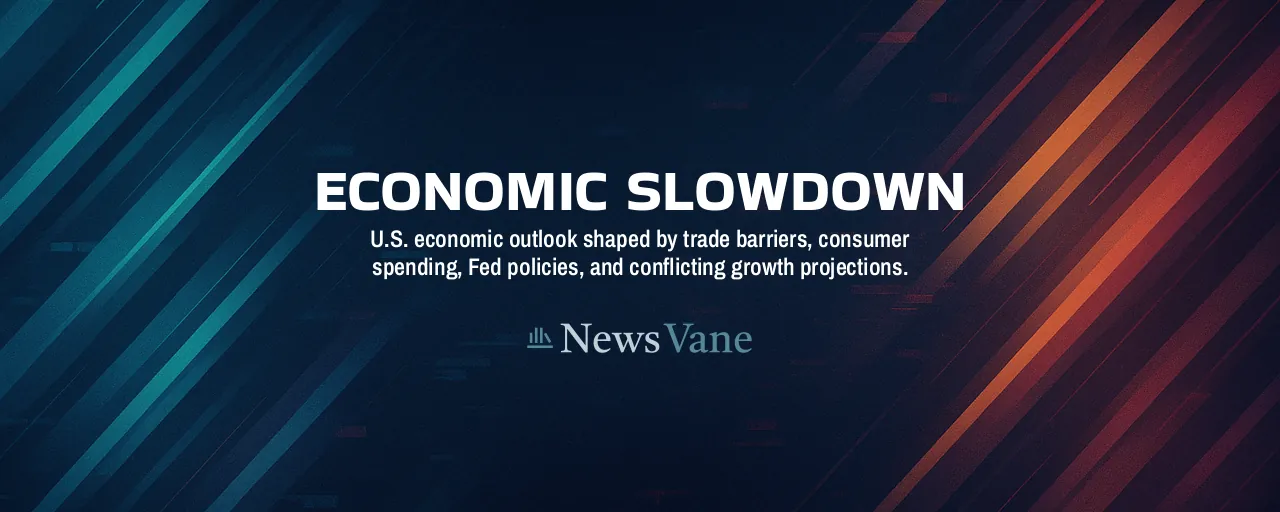A Dimmer Economic Outlook
The U.S. economy is bracing for a bumpy ride. The World Bank's June 2025 report projects U.S. GDP growth at just 1.4% for 2025, a sharp drop from its earlier 2.3% estimate. For 2026, the forecast edges up to 1.6%, down from 2%. Rising trade barriers and a global slowdown are largely to blame, squeezing exports and supply chains.
These numbers carry weight beyond spreadsheets. They signal tougher times for workers, businesses, and families facing higher costs and uncertain job prospects. Still, pockets of resilience, like strong consumer spending, hint at potential to weather the storm. The question is how these forces will play out in daily life.
Understanding the path ahead requires unpacking the global and domestic pressures shaping this forecast and exploring what they mean for ordinary Americans.
Tariffs Take a Toll
Trade barriers stand out as a major hurdle. U.S.-imposed tariffs, met with retaliation from other nations, are disrupting supply chains and driving up costs. The World Bank warns that further escalation could drag global growth to 1.8%, a low not seen outside recessions since 2008.
American exports, from machinery to consumer goods, are losing ground as foreign demand softens. Multinational companies, grappling with uncertainty, are rethinking investment plans. This global drag amplifies domestic challenges, leaving businesses hesitant to expand.
Consumers Push Forward, Businesses Pause
American consumers are holding the line. Early 2025 data shows spending growth of 2.3% annually, with Gen Z and millennials boosting outlays by nearly 5.9% in May. Holiday and election-year purchases fueled this surge, keeping the economy afloat.
Businesses, however, are treading carefully. Investment in intellectual property remains robust, but equipment spending is stalling due to tariff-related uncertainty. Home construction is also on hold, awaiting lower mortgage rates. If consumer momentum fades, the economy could face sharper challenges.
The Federal Reserve's Steady Hand
The Federal Reserve is keeping a close watch. Holding the federal funds rate at 4.25–4.50%, it cites inflation risks from tariffs and a sizable fiscal deficit. Most economists predict no rate cuts before September 2025, a stance that curbs demand in sectors like housing and business investment.
Inflation adds complexity. While headline inflation dropped to 2.3% in April 2025, core inflation lingers at 2.8%. Rising shelter costs and wage pressures in service industries keep prices elevated, squeezing real incomes and consumer confidence.
Varied Visions for Growth
Perspectives on the economy's future diverge. Analysts who support deregulation and tax cuts project growth between 2.0% and 3.0% in 2025, citing policies that could lift corporate earnings. Firms like Goldman Sachs predict 2.5% GDP growth, with Morgan Stanley forecasting a robust stock market.
Economists favoring public investment are less optimistic, projecting growth near 1.5%. They warn that tariffs and rising inequality could weaken demand, urging infrastructure and social program funding to strengthen the economy's foundation.
Navigating the Road Ahead
The U.S. economy faces a pivotal moment. The World Bank's lowered forecast highlights risks from trade tensions and global weakness, yet consumer resilience offers a lifeline. Policymakers weigh options like easing trade barriers, adjusting interest rates, or boosting public investment.
For everyday Americans, the impact is real. Higher prices or slower job growth could strain budgets, but strong spending and innovation signal adaptability. The path forward hinges on balancing these dynamics with thoughtful policy choices.
As 2025 progresses, the economy's trajectory will depend on decisions that bridge immediate challenges with long-term goals. Staying informed and engaged will be key for all of us.
